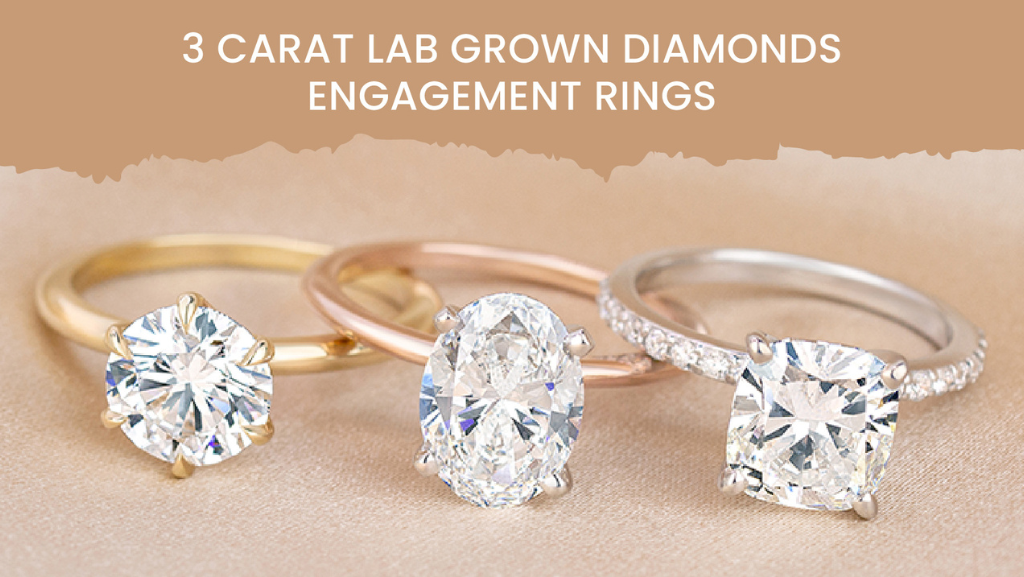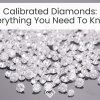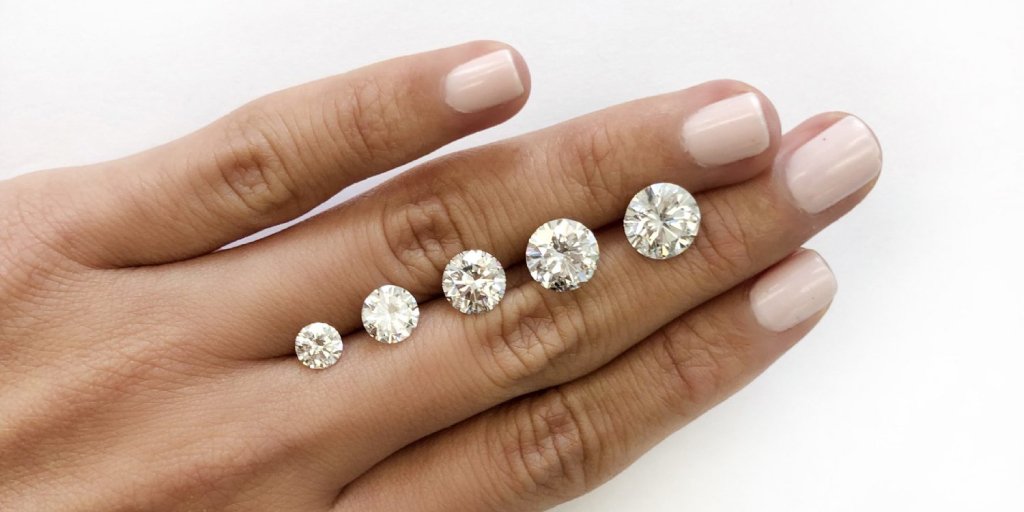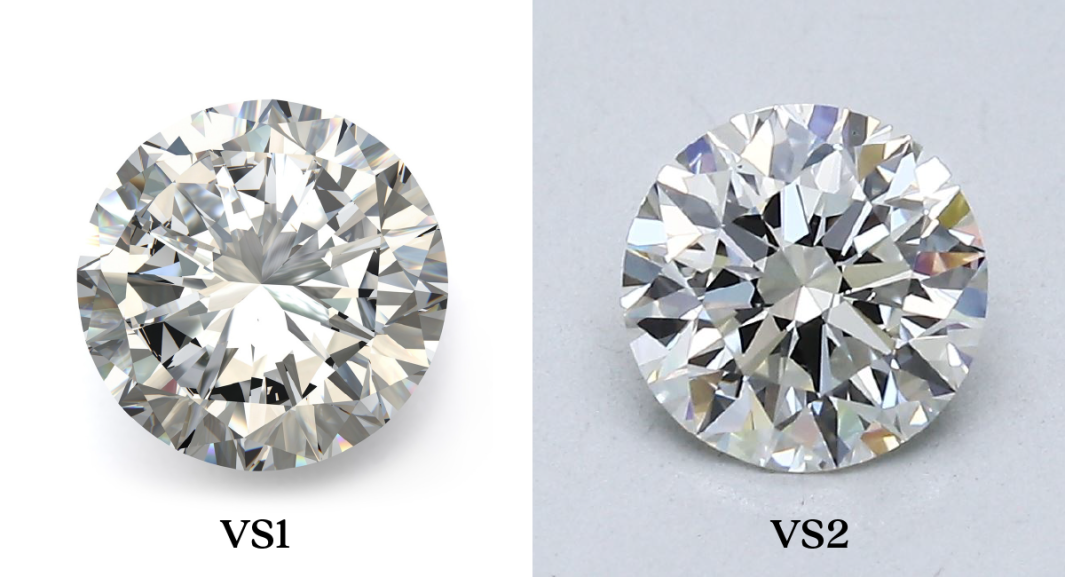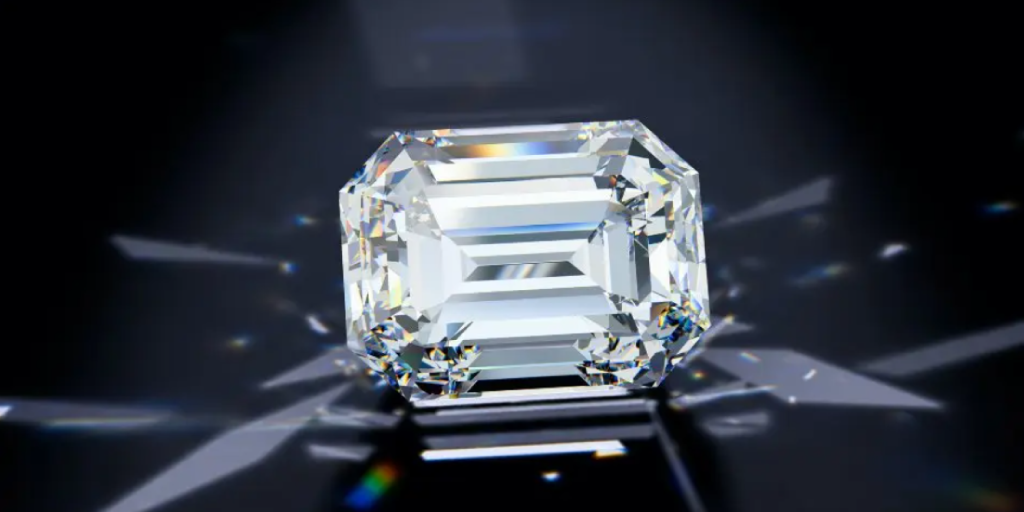Emerald Cut vs Radiant Cut Diamond: Clear Cut Distinction
Diamonds have always been available in a wide variety of qualities, cuts, colors, shapes, etc. to customers around the world. While the diamond has many important features, one of its most important aspects includes how the diamond has been cut by the jeweler or designer. Hence, every piece of diamond is available to the customers in various cuts such as the round cut, radiant cut, emerald cut, princess cut, etc.
One such example is the emerald cut and the radiant cut made in diamonds. Although similar from many perspectives, both cuts signify different things and are suitable for different kinds of diamond wearers. Hence, customers should choose according to their personal preferences and what they think would accurately symbolize the situation for which the diamond jewelry is being bought.
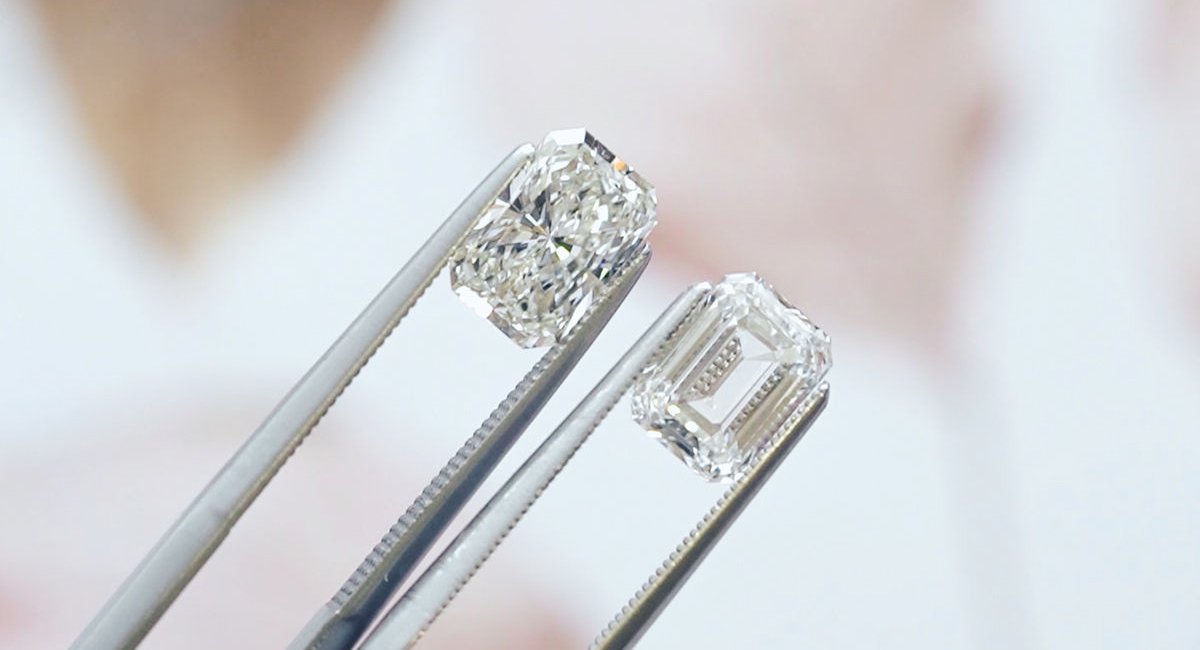
The emerald cut and the radiant cut are very similar in their outward appearance and hence might tend to confuse people when seen from afar. They are cuts that stay unique and individual in their appearance. Emerald cut diamonds have been a classic cut that imparts a vintage feel to the jewelry. While radiant cut diamonds have a more modern twist and give off an aesthetic vibe.
What is an emerald-cut diamond?
An emerald-cut diamond is shaped like a rectangle with accurately cut corners. Owing to their step-cut facets, a term coined due to their staircase-like ascending cuts, emerald diamonds feature numerous long, beautiful dashes of light. The paralleled cuts form the iconic hall-of-mirrors appearance of the diamond.
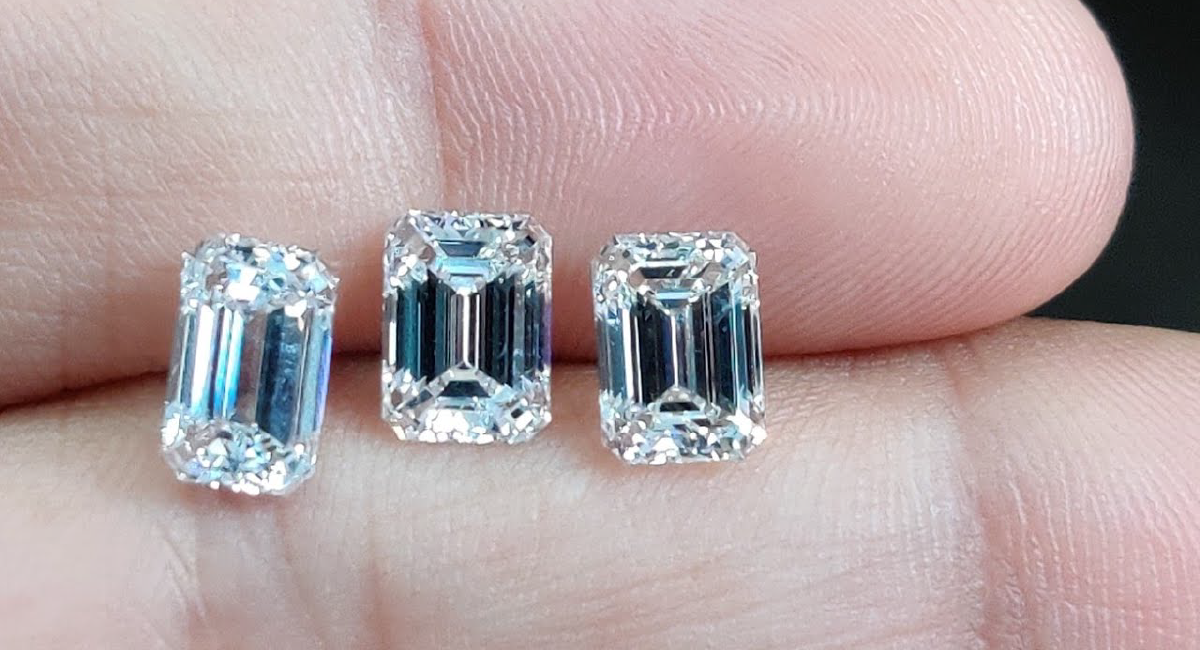
The Emerald Cut became rather prevalent during the period of Art Deco (1920-30). The cut gradually became more complex as it was given more facets by jewelers around the world, and became the contemporary cut as we know it today. Currently, the emerald cut is primarily used to emphasize the clarity and purity of the color of the gem.
The cut is unforgiving to diamonds with the slightest of inflictions as blemishes are easily susceptible to the naked eye. The name was coined due to the sequential arrangement of its 57 facets, which are separated into 24 facets on the base, 8 facets on the girdle, and 25 facets on the table. The flat tabletop does have a broad and dazzling width.
Shape
Carat
Cut
Color
Clarity
Price
emerald
2.10
Ideal
D
VVS2
$1089 $778
View
emerald
2.09
Ideal
G
VVS2
$694 $661
View
emerald
2.07
Ideal
E
IF
$2568 $1926
View
emerald
2.06
Ideal
D
VVS1
$2111 $1583
View
emerald
2.08
Ideal
D
VVS1
$2129 $1597
View
emerald
2.07
Ideal
E
VVS2
$1501 $1126
View
emerald
2.10
Ideal
D
VVS1
$2149 $1612
View
emerald
2.07
Ideal
D
VVS1
$2997 $2248
View
emerald
2.08
Ideal
D
VVS1
$3012 $2259
View
emerald
2.10
Excellent
F
VVS1
$3249 $2437
View
emerald
2.10
Excellent
E
IF
$2523 $1892
View
emerald
2.10
Ideal
I
VVS2
$1157 $868
View
emerald
2.07
Ideal
E
IF
$2568 $1926
View
emerald
2.07
Ideal
E
IF
$2568 $1926
View
emerald
2.08
Ideal
E
IF
$2580 $1935
View
emerald
2.07
Ideal
D
IF
$3513 $2635
View
emerald
2.06
Excellent
F
VS1
$1329 $997
View
emerald
2.05
Ideal
E
VVS2
$1764 $1323
View
emerald
2.05
Ideal
D
VVS2
$1880 $1410
View
emerald
2.08
Ideal
E
VVS1
$2185 $1639
View
What is a Radiant Cut Diamond?
Having merely ten more facets and a cubical shape similar to the emerald cut diamond, one can argue that the radiant cut diamond might have a similar outline as the former. However, there are crucial differences that help people choose between the two.
Invented by Henry Grossbard, a renowned diamantaire during World War II, in 1977, the radiant cut is a stunning square geometry of the gemstone that incorporates every one of the biggest outlines seen in the round cut and emerald cut. Hence, it has flashes of a rainbow and bright white light.
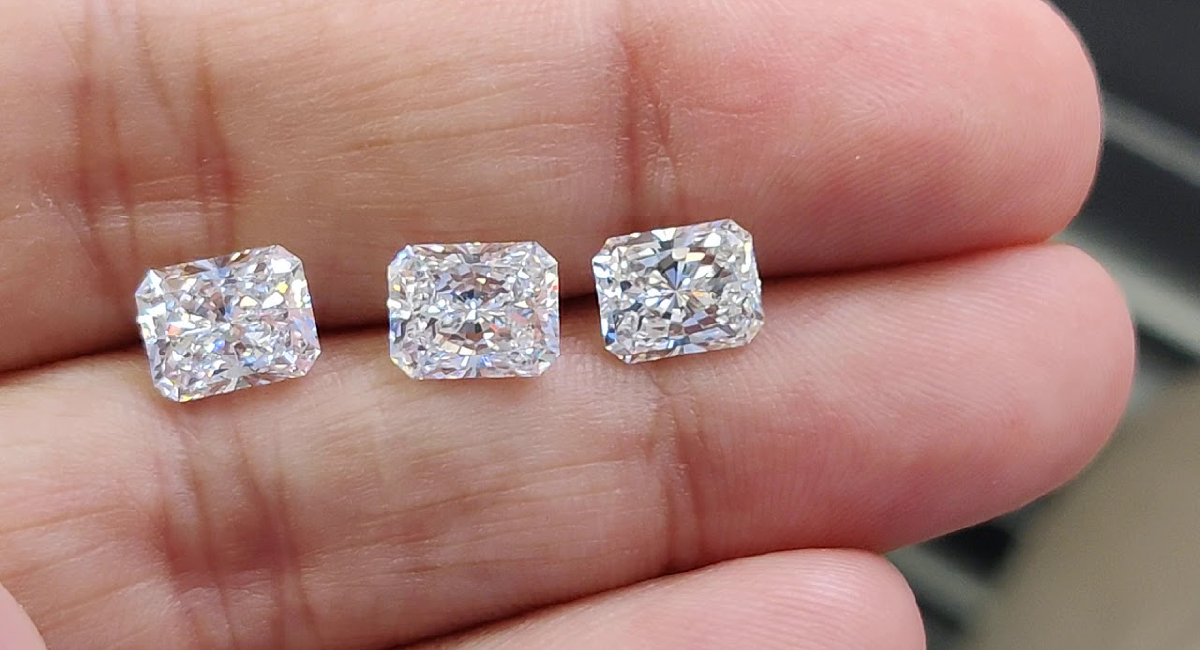
Square cuts hold an innate beauty within themselves that stands out among the other varieties of diamond cuts. The radiant cut is a middle ground between the emerald cut and a round brilliant diamond.
The 70 facets transport the light to the center of the stone and help it bounce back, giving the stone incomparable sparkle. It is commonly believed that radiant cut is the only cut that comes close to outperforming brilliant cut in terms of dazzle and brilliance.
Radiant cut diamonds seem bigger than other diamond cuts having similar carat weight owing to their oblong form. Also, because of its oblique edges, the radiant-cut diamond is immune to the damage and ravages of time, making it far more durable.
To help customers get a better idea about the differences that lie between an emerald cut and a radiant cut diamond, here are some of the factors that cause the variations between the two.
Shape
Carat
Cut
Color
Clarity
Price
radiant
2.07
Ideal
D
VVS1
$2621 $1966
View
radiant
2.09
Ideal
E
VS1
$1085 $814
View
radiant
2.06
Ideal
D
VVS1
$3471 $2603
View
radiant
2.06
Ideal
D
VVS1
$3483 $2612
View
radiant
2.07
Ideal
D
VVS1
$3487 $2615
View
radiant
2.07
Ideal
D
VVS1
$3487 $2615
View
radiant
2.07
Ideal
D
VVS1
$3487 $2615
View
radiant
2.08
Ideal
D
VVS1
$3504 $2628
View
radiant
2.09
Ideal
D
VVS1
$3531 $2648
View
radiant
2.09
Ideal
D
VVS1
$2647 $1985
View
radiant
2.05
Excellent
D
VVS1
$3208 $2406
View
radiant
2.09
Ideal
H
VS2
$1083 $812
View
radiant
2.09
Ideal
D
VVS1
$2647 $1985
View
radiant
2.06
Ideal
D
VVS1
$2473 $1855
View
radiant
2.08
Ideal
F
IF
$6156 $4617
View
radiant
2.05
Ideal
F
VS1
$1104 $828
View
radiant
2.05
Ideal
E
IF
$6793 $5095
View
radiant
2.05
Ideal
E
VS1
$2716 $2037
View
radiant
2.05
Ideal
E
VS1
$2716 $2037
View
radiant
2.05
Ideal
F
VVS1
$3616 $2712
View
Difference Between Emerald Cut and Radiant Cut
The basic distinction between the Emerald cut vs radiant cut is the appearance of the diamond’s brilliance. The emerald-cut diamonds have straight cuts and light can be seen in the form of strips through the diamond. Whereas, the radiant cut diamond is seen sparkling with flashes of light here and there.
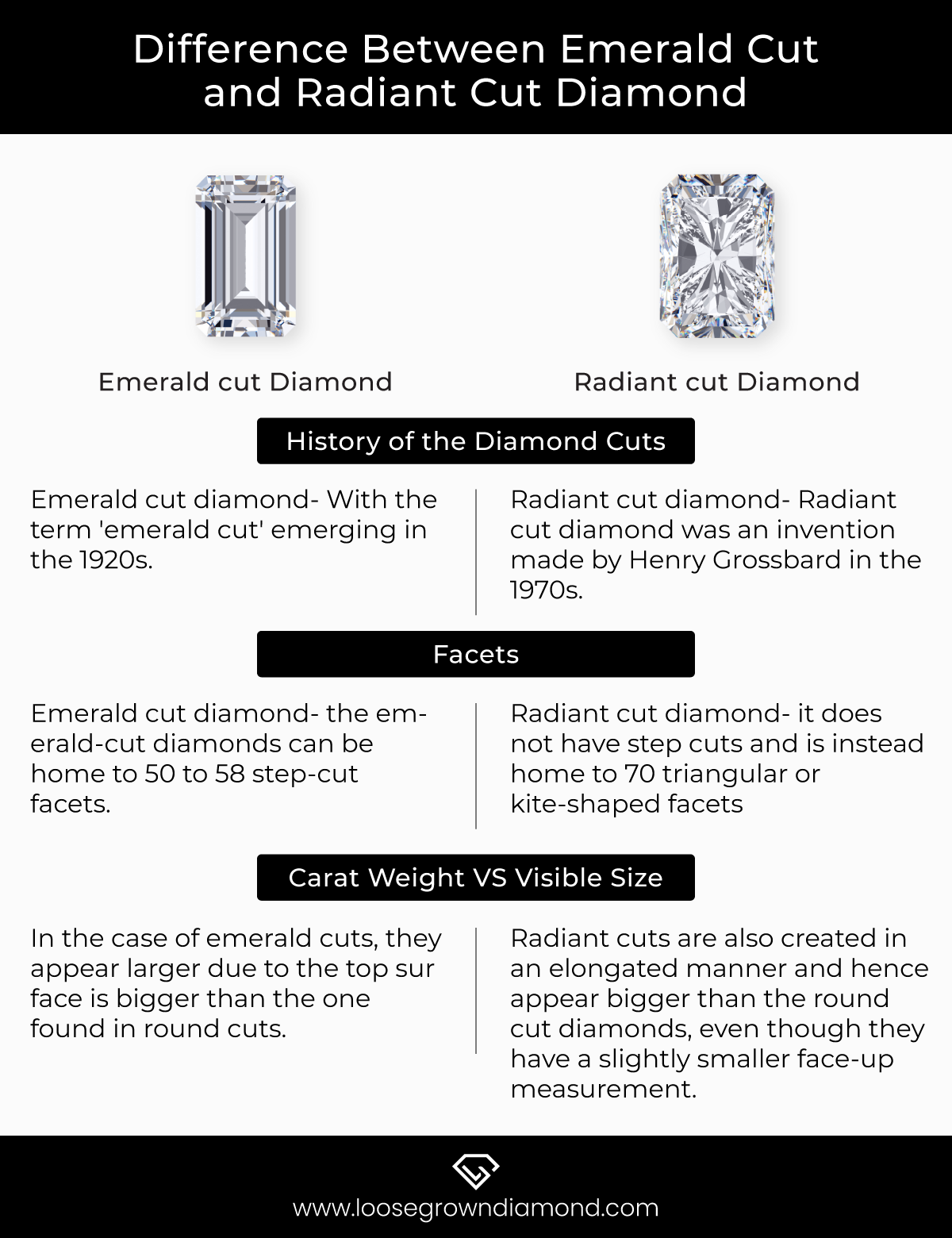
Emerald Cut vs Radiant Cut: History of the Diamond Cuts
Emerald Cut
One of the oldest diamond shapes to exist, the emerald cut can be traced back to the table cut of the 1500s from which the emerald cut was further developed. Originally termed as the multi-faceted table cut, the cut was first and foremost used on emeralds as the name suggests, and was only a lot later on brought as another variety into the world of diamonds.
With the term ‘emerald cut’ emerged in the 1920s, it has often been associated with the era of Art Deco wherein clean lines and symmetry were in trend amongst the people and enjoyed their own class of popularity. Then in the 1940s, the cut was further more refined and standardized which could be done with the invention of much more advanced and systematic diamond-cutting tools.
Radiant Cut
Unlike the emerald cut which is a design of the olden times, the radiant cut is a much more modern style that was an invention made by Henry Grossbard in the 1970s. The term ‘radiant cut’ has been patented by Grossbard so generally on the laboratory certificates provided by GIA or AGS, the cut is referred to as a “rectangular brilliant” or “cut-cornered square”.
The radiant cut was created as a hybrid wherein the cut has many facets that have been designed in a manner to maximize the brilliance and beauty of the diamond. One of the sparkliest varieties in cuts for the diamond industry, the radiant cut diamond is made with a brilliant faceting pattern that is present in both the crown and pavilion of the gemstone.
Emerald Cut vs Radiant Cut: Facets
The number of facets on an emerald cut diamond is 57, whereas in a radiant cut diamond is 70. In an emerald diamond, one can see that the facets are created in a ‘stepped manner’ (one step after another like a staircase) that adds a mirror effect to the diamond cut. The facets are all elongated and hence we can see that the inclusions are very evident if any. The diamond appears very sleek and classy.
In a radiant cut diamond, one can observe the facets to be triangular or kite-shaped. These angular facets add more character to the rectangular diamond and mask a lot of inclusions that the diamond might possess. The cuts of the diamond make it appear shiny and brilliant. A lab-grown emerald-cut diamond will be as stunning and brilliant as a naturally extracted diamond.
Emerald Cut
The emerald-cut diamonds have a rectangular outline and the corners are cut in a particular manner. Depending on the dimensions of the gem, the emerald-cut diamonds can be home to 50 to 58 step-cut facets. The step cuts are arranged parallelly and this leads to the creation of stunning flashes of light which in turn causes a “hall of mirrors” effect. This cut is known to be slightly more elegant than radiant cut diamonds and also exhibits a more sophisticated sparkle.
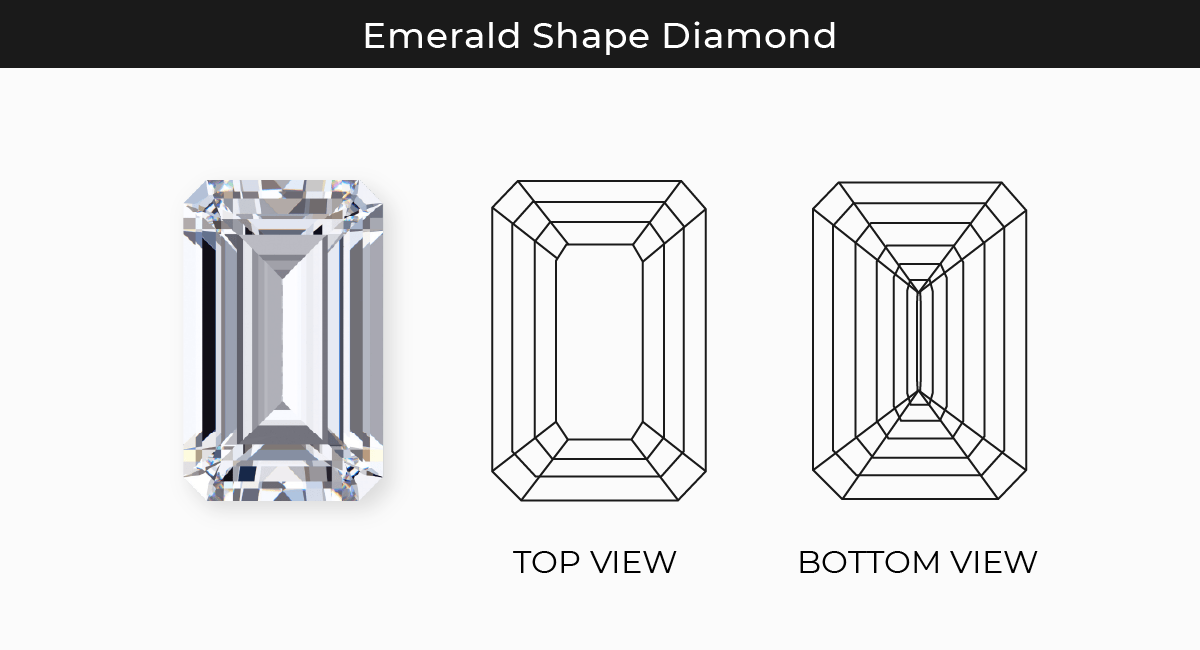
Radiant Cut
The major difference in the radiant cut is that although it is rectangular in shape much like the emerald cut, it does not have step cuts and is instead home to 70 triangular or kite-shaped facets which originate from the center and do an excellent job of maximizing the brilliance and sparkle of the stone.
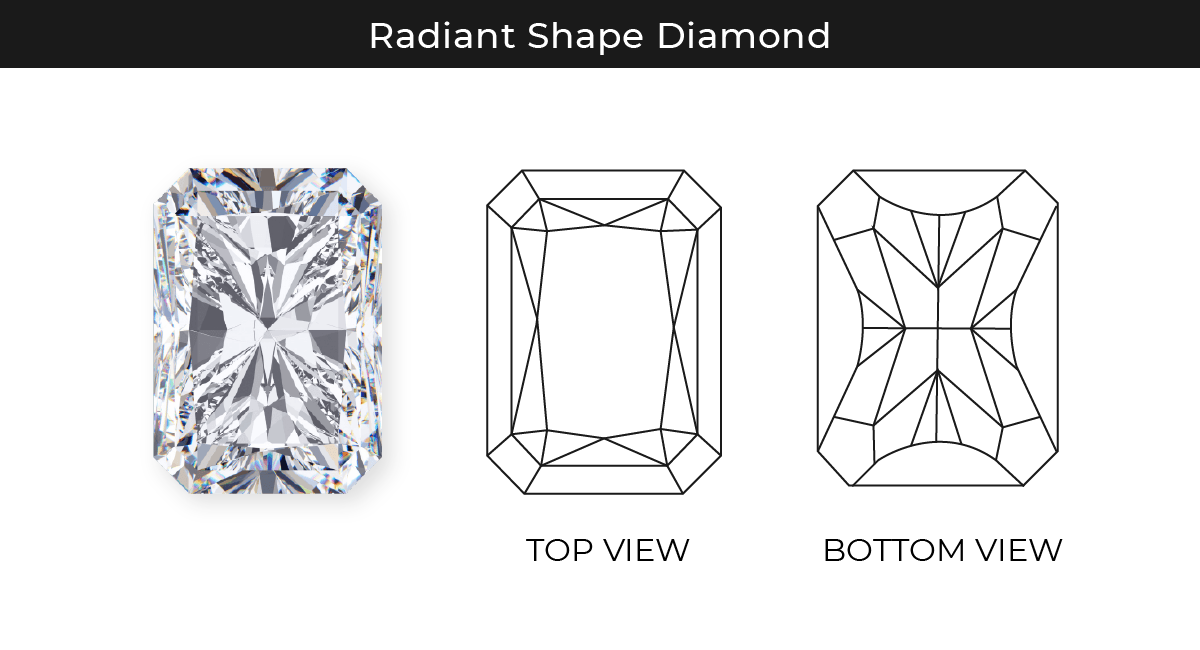
Emerald Cut vs Radiant Cut: Carat Weight vs Visible Size
The difference between carat weight and the visible size between the emerald and radiant cuts is almost the same, with both the cuts appearing larger than their actual carat weight. You can use our Diamond Carat Size Chart to determine the right size for your diamond.
When comparing a round brilliant cut diamond with an emerald and radiant cut diamond, all of the same carat weight, it can be easily noticed that both these diamonds appear larger. In the case of emerald cuts, they appear larger due to the top surface is bigger than the one found in round cuts.
Radiant cuts are also created in an elongated manner and hence appear bigger than the round cut diamonds, even though they have a slightly smaller face-up measurement when compared with the round cuts of the same weight.
With radiant diamonds, it was within Grossbard’s interest to create a diamond that would appear as large as possible by investing not too much. And so, he paired a broad and shallow design with a highly brilliant faceting pattern. This gave rise to an excellent optical illusion wherein the radiant cut diamonds truly felt like they were radiating brilliance and shimmer.
Emerald Cut vs Radiant Cut: Clarity and Inclusions
Emerald cut diamonds emphasize clarity, with their step-cut faceting style making inclusions more visible. It’s essential to prioritize high clarity when choosing an emerald cut. In contrast, radiant-cut diamonds are more forgiving with inclusions due to their brilliant-cut facets that disperse light, making flaws less noticeable.
This allows for flexibility in selecting a slightly lower clarity grade while still achieving a brilliant appearance. Your choice should depend on your preference for clarity and the balance between clarity and brilliance in your diamond.
When choosing between the two cuts, consider how you prioritize clarity in your diamond and your willingness to balance it with other factors such as brilliance and sparkle.
Emerald Cut vs Radiant Cut: Which is Better?
The choice between an emerald cut and a radiant cut diamond ultimately depends on your personal preferences and the specific qualities you value in a diamond. If you value a classic, understated look and are willing to prioritize clarity, the emerald cut might be the better choice. On the other hand, if you’re drawn to a more brilliant, contemporary, and versatile option with exceptional sparkle and are open to various clarity grades, the radiant cut could be the ideal choice for you.
Radiant cut diamonds are known for their exceptional brilliance and fire. The emerald cut is often associated with a classic and timeless look. Both radiant-cut diamond and emerald-cut diamond have their strengths and beauty. The radiant cut vs emerald cut diamond is a tough choice, wherein the radiant cut is more modern and the emerald cut is more vintage.
Emerald Cut vs Radiant Cut: Valuable Tips for Choosing Diamonds
Different diamond cuts have varying degrees of leniency in relation to the 4C categories. Two particular cuts, the Emerald Cut and the Radiant Cut, exhibit significant differences in how they showcase flaws.
When opting for an emerald-cut diamond, it is advisable to prioritize a higher clarity grade. This is because the large table of an Emerald Cut tends to highlight any visible inclusions. Due to the lower concentration of color in this cut, you can compromise on the color grade and instead focus on securing a higher clarity grade.
On the other hand, Radiant Cut diamonds feature a faceting style that is more forgiving of internal flaws, effectively concealing inclusions with intense brilliance. It is possible to find a stunning Radiant Cut diamond with an SI1 or SI2 clarity grade. With this cut, you can consider upgrading to a higher color grade, as the faceting style tends to reveal a more pronounced concentration of color.
Regardless of the chosen cut, you have some flexibility in sacrificing a bit on the color grade if your ring is crafted from yellow or rose gold, as opposed to white gold or platinum.
Where to Buy Emerald Cut and Radiant Cut Diamonds?
An emerald-cut diamond or a radiant-cut diamond can be bought at Loose Grown Diamonds. We offer the best in class diamonds which can be shipped anywhere on the globe. Additionally, if you are confused about determining the price of your selected diamond, you can use our Diamond Value Calculator.
From customizations in pieces of jewelry to the availability of a specific type of stone we have it all. You can have a look at our inventory and also get a discount by using our promo code.
Ending Remarks
Emerald cut vs radiant cut diamonds have seen some similarities and some differences. The beauty of these diamonds is most enhanced in diamond rings and that is when the diamond tends to individually stand out within themselves.
The emerald cut engagement rings have had the vintage touch and hence the huge demand for this classy style. The radiant cut diamond ring has its own fan following. But as a diamond ring has an amalgamation of classy and modern styles you can choose which stone favors your personality. Both of these cuts have their own strongholds and hence both stay as beautiful and stunning, evolving through the test of time.
FAQs
How much is a 2 carat emerald cut diamond?
A 2 carat emerald cut diamond can cost starting from around $600 and increases based on the other 3 C’s that are chosen.
Which is the more expensive emerald cut and radiant cut?
A radiant cut diamond is slightly more expensive than the emerald cut diamond as we see the number of facets increase and so does the effort to add those facets.
Which cut is more suitable for an engagement ring?
Both the radiant cut and the emerald cut look absolutely stunning in an engagement ring.
Can I customize the ratio of length to width for emerald and radiant cuts?
Yes, the ratio of length to width can be customized. For an emerald cut diamond, the ideal ratio is 1.3- 1.6 and for a radiant cut diamond is 1-1.35.

